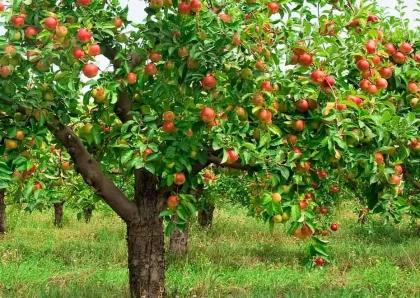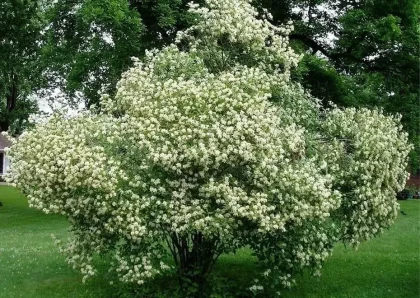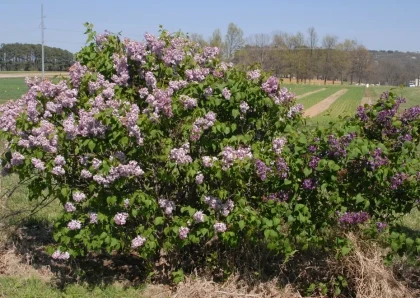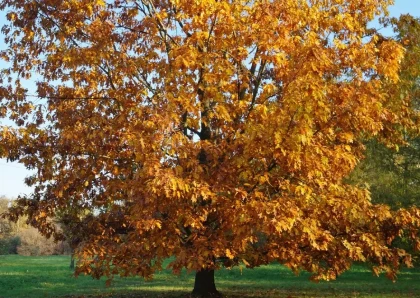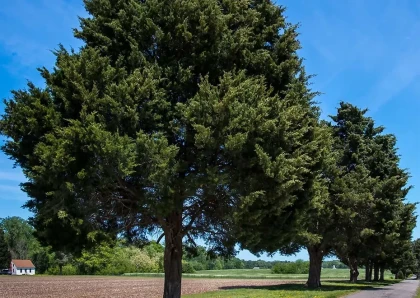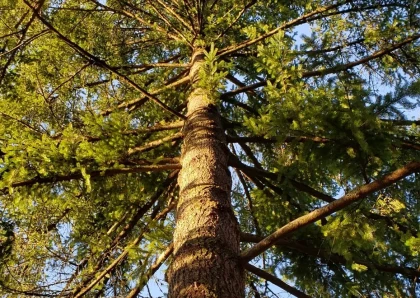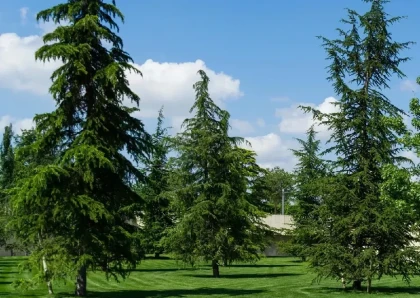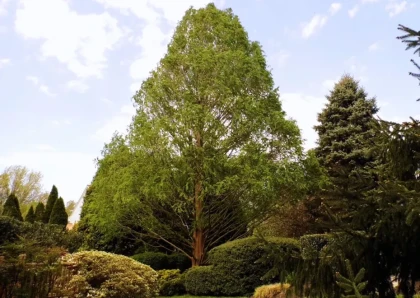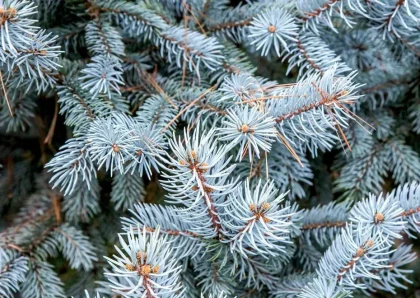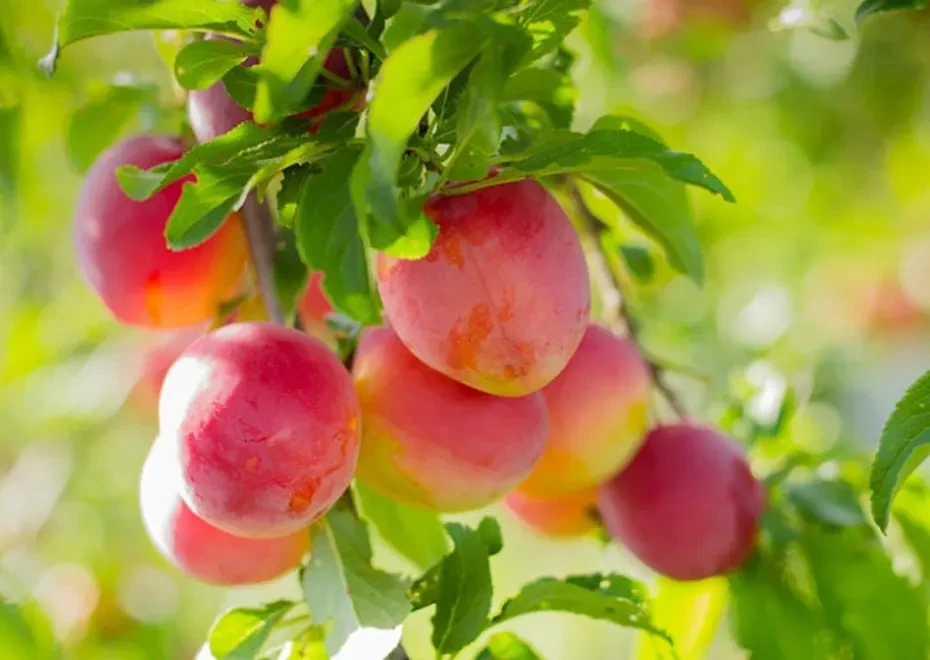
Burbank Plum Tree
Overview
Description
The "Burbank" plum (Prunus salicina 'Burbank') is a popular Japanese plum cultivar developed by Luther Burbank. It is one of his most famous creations and has been enjoyed by home gardeners and commercial growers alike.
Characteristics:
- Fruit: The fruit of the Burbank plum is medium to large in size, typically round or slightly oval. It has smooth, purple-red to red skin, and the flesh is sweet and juicy. The taste can vary slightly depending on the ripeness, but it is generally well-balanced between sweetness and acidity.
- Harvest Time: The plums are usually ready for harvest in mid to late summer, depending on the local climate.
- Tree: The Burbank plum tree is relatively vigorous and can grow to a moderate size. It is a deciduous tree with attractive green foliage in the spring and summer, turning golden-yellow in the fall.
- Pollination: Most plum trees are not self-pollinating, and the Burbank plum is no exception. For a good fruit set, it is recommended to plant another Japanese plum variety nearby to facilitate cross-pollination.
- Climate: Burbank plums thrive in temperate climates with cold winters and hot summers, making them suitable for many regions.
- Uses: These plums are primarily enjoyed fresh, but they can also be used in various culinary applications, such as making jams, preserves, and desserts.
Burbank Plum Varieties
- Santa Rosa Plum (Prunus salicina 'Santa Rosa'): One of Burbank's most popular creations, the Santa Rosa plum is known for its large, reddish-purple fruit with sweet and flavorful flesh. It has become a widely grown and enjoyed plum variety around the world.
- Elephant Heart Plum (Prunus salicina 'Elephant Heart'): This cultivar produces large, heart-shaped plums with dark purple skin and sweet, juicy, and aromatic red flesh. It is a favorite among many plum enthusiasts.
- Wickson Plum (Prunus salicina 'Wickson'): Named after Burbank's friend, Edward J. Wickson, this plum variety produces small, round fruit with dark purple skin and yellowish flesh. It is known for its intense sweetness and is often used for making jams and preserves.
- Golden Plum (Prunus salicina 'Golden'): As the name suggests, this plum variety features golden-yellow skin and sweet, juicy yellow flesh. It offers a delightful alternative to the more common red and purple plums.
- Burbank July Elberta (Prunus salicina 'Burbank July Elberta'): A hybrid between a plum and a peach, this cultivar combines the characteristics of both fruits. It produces large, round fruit with yellow skin and juicy, sweet flesh.
- Formosa Plum (Prunus salicina 'Formosa'): The Formosa plum is a Japanese plum variety developed by Burbank. It is prized for its large, heart-shaped fruit with reddish-purple skin and juicy, flavorful flesh.
Products Made from Burbank Plums
- Plum Jam: Burbank plums are often used to make flavorful and sweet plum jam, which can be enjoyed as a spread on toast, muffins, or used as a filling in pastries and cakes.
- Plum Preserves: Preserving Burbank plums allows you to enjoy their taste throughout the year. Preserved plums can be served alongside meats, cheese, or used as toppings for desserts.
- Plum Sauce: A tangy and sweet plum sauce made from Burbank plums can be used as a condiment for various dishes, such as grilled meats, spring rolls, or stir-fried vegetables.
- Plum Compote: Compote is a cooked fruit dessert that can be made with Burbank plums, often sweetened with sugar or honey and flavored with spices like cinnamon or vanilla.
- Plum Pie: Fresh or cooked Burbank plums can be used as a filling for scrumptious plum pies, either on their own or combined with other fruits like apples or berries.
- Plum Cobbler: A plum cobbler is a comforting dessert made with baked plum filling and a biscuit-like topping.
- Plum Crumble: Similar to a cobbler, a plum crumble features baked plum filling but is topped with a crispy crumble made from flour, butter, and sugar.
- Plum Sorbet: Pureed and sweetened Burbank plums can be turned into a refreshing sorbet, which is a frozen fruit-based dessert.
- Plum Smoothies: Burbank plums can be blended with yogurt, ice, and other fruits to make delicious and nutritious plum smoothies.
- Plum Chutney: Chutney made from Burbank plums can be a delightful accompaniment to savory dishes, especially grilled meats or cheese platters.
- Plum Liqueur: Infusing plum flavor into alcohol creates a delicious plum liqueur, which can be enjoyed as an aperitif or used in cocktails.
- Dried Plums (Prunes): Drying Burbank plums turns them into prunes, a nutritious and naturally sweet snack.
- Plum Vinegar: Fermenting Burbank plums can yield plum vinegar, which can be used in dressings, marinades, or as a tangy flavor enhancer.
Benefits of Burbank Plums
- Nutrient-Rich: Burbank plums are packed with essential vitamins and minerals. They are a good source of vitamins like vitamin C, vitamin K, and vitamin A. They also contain minerals such as potassium, calcium, and magnesium.
- Rich in Antioxidants: These plums are abundant in antioxidants, including anthocyanins, which give them their deep purple color. Antioxidants help neutralize harmful free radicals in the body and may contribute to overall health and well-being.
- Digestive Health: Burbank plums are a good source of dietary fiber, which promotes healthy digestion. Fiber aids in regulating bowel movements, preventing constipation, and supporting gut health.
- Heart Health: The potassium content in Burbank plums can help regulate blood pressure and support heart health. Additionally, their antioxidants may contribute to reducing the risk of cardiovascular diseases.
- Weight Management: With their low calorie and high fiber content, Burbank plums can be a valuable addition to a weight management plan. The fiber helps you feel fuller for longer, reducing the likelihood of overeating.
- Bone Health: The vitamin K in Burbank plums plays a role in maintaining bone health and may contribute to bone density and strength.
- Skin Health: The vitamin C and antioxidants in these plums can help promote healthy skin by protecting it from oxidative stress and supporting collagen production.
- Hydration: With their high water content, Burbank plums can aid in maintaining hydration levels, which is essential for overall health.
- Natural Sweetness: Burbank plums offer a naturally sweet flavor, making them a healthier alternative to processed sugary snacks.
- Versatility in Cooking: These plums are versatile in the kitchen, allowing you to create a variety of delicious dishes, including desserts, jams, sauces, and more.
- Immune Support: The vitamin C content in Burbank plums can support the immune system and help the body fight off infections and illnesses.
- Reduced Risk of Chronic Diseases: Regular consumption of fruits like Burbank plums is associated with a reduced risk of chronic diseases, including certain types of cancers, due to their antioxidant and nutrient content.
Tips for Planting and Maintaining Burbank Plum Trees
Planting Tips:
- Choose the Right Location: Select a site with full sunlight and well-draining soil for planting the Burbank plum tree. Avoid low-lying areas prone to frost or waterlogging.
- Planting Time: Plant the tree in late winter or early spring when it is dormant and the soil is workable. This allows the tree to establish its roots before the growing season.
- Spacing: Allow sufficient space between trees to ensure proper air circulation and room for growth. Generally, Burbank plum trees should be planted about 15-20 feet apart.
- Soil Preparation: Prepare the soil by adding organic matter like compost or well-rotted manure to improve soil fertility and drainage.
- Planting Depth: Plant the tree at the same depth as it was in the nursery container or as specified in the planting instructions. Avoid planting it too deep or too shallow.
- Watering: After planting, water the tree thoroughly to help settle the soil and encourage root establishment.
- Mulching: Apply a layer of organic mulch around the base of the tree, but keep it away from the trunk. Mulch helps retain soil moisture, suppresses weeds, and regulates soil temperature.
Maintenance Tips:
- Watering: Burbank plum trees require regular watering, especially during dry periods or in the first year after planting. Water deeply at the base of the tree to encourage deep root growth.
- Pruning: Regular pruning is essential to maintain the health and shape of the tree. Prune during the dormant season to remove dead or diseased wood and to shape the tree for better sunlight penetration.
- Fertilizing: Apply a balanced fertilizer in early spring to provide essential nutrients for healthy growth. Avoid over-fertilizing, as excessive nitrogen can lead to excessive vegetative growth at the expense of fruit production.
- Pest and Disease Control: Monitor the tree regularly for any signs of pests or diseases. Apply appropriate treatments if necessary, and consider using natural or organic pest control methods whenever possible.
- Thinning Fruit: To ensure larger and healthier fruits, thin out excess fruit when they are still small. This prevents overcrowding and allows the remaining fruits to develop properly.
- Protecting from Wildlife: Use netting or other methods to protect the tree from birds and other wildlife that may feed on the fruits.
- Winter Protection: In areas with harsh winters, consider providing winter protection by wrapping the tree trunk with tree wraps or using other protective measures.
- Regular Inspection: Regularly inspect the tree for signs of stress, disease, or nutrient deficiencies. Early detection can help address issues before they become severe.
Cons of Planting Burbank Plum Trees
- Challenging Soil Requirements: Burbank plum trees prefer well-draining soil and may struggle in heavy clay soils or areas with poor drainage. Soil amendments and proper preparation may be required to create an ideal environment for the tree to thrive.
- Pollination Requirements: Some varieties of Burbank plum trees may require cross-pollination with another compatible plum tree to produce fruit effectively. If you have limited space or lack neighboring plum trees, you may need to select self-pollinating varieties or consider planting multiple plum trees.
- Susceptibility to Pests and Diseases: Like many fruit trees, Burbank plum trees can be susceptible to various pests and diseases, such as aphids, plum curculio, brown rot, and bacterial canker. Regular monitoring and appropriate pest and disease management strategies may be necessary.
- Pruning and Maintenance: Proper pruning and maintenance are essential for the health and productivity of Burbank plum trees. Neglecting regular pruning can lead to a decrease in fruit production and make the tree more susceptible to diseases and pests.
- Fruit Drop: Some Burbank plum varieties may experience fruit drop, where the tree drops immature fruit before it ripens. Factors such as weather conditions, inadequate pollination, or insufficient nutrients may contribute to fruit drop.
- Limited Cold Hardiness: Depending on the specific variety, Burbank plum trees may have limited cold hardiness. They may not tolerate extremely low temperatures, and frost damage can occur in colder climates.
- Size and Space Requirements: Burbank plum trees can grow to a substantial size, and it's essential to consider their mature height and spread when planting them. They may not be suitable for small gardens or urban spaces with limited room for growth.
- Time to Fruit Production: Newly planted Burbank plum trees typically take a few years to establish and bear fruit. If you are looking for quick fruit production, consider buying more mature trees or explore other fast-growing fruit tree options.
- Unpredictable Fruit Quality: While many Burbank plum varieties are known for their excellent taste and characteristics, fruit quality can vary depending on factors like weather, soil conditions, and pollination success. This variability may impact the consistency of fruit quality from year to year.
- Allergenic Potential: Some individuals may be allergic to plum trees or their pollen, causing allergies or respiratory issues.
Conclusion
Burbank plum, although not a single specific cultivar, refers to various plum varieties developed by the renowned horticulturist Luther Burbank. These plums have gained popularity for their delicious flavor and unique characteristics. Some of the notable cultivars created by Luther Burbank include the Santa Rosa Plum, Elephant Heart Plum, Wickson Plum, Golden Plum, Burbank July Elberta, and Formosa Plum.
Burbank plum offers numerous benefits as a fruit, being nutrient-rich and a good source of vitamins, antioxidants, and minerals. It promotes digestive health, supports heart health, and aids in weight management. Additionally, its natural sweetness and versatility make it an excellent ingredient for various culinary delights, such as jams, sauces, pies, and sorbets.
However, planting and maintaining Burbank plum trees come with considerations. The tree's challenging soil requirements, susceptibility to pests and diseases, and potential fruit drop can pose challenges to gardeners. Adequate pruning, care, and attention are necessary to ensure the tree's health and productivity.
Despite these considerations, Burbank plum remains a valuable addition to any garden or orchard, providing both aesthetically pleasing blossoms in spring and a bountiful harvest of delectable fruits. With proper care and attention, Burbank plum trees can be a rewarding and enjoyable addition to the landscape, bringing beauty and tasty treats for years to come.
FAQs about Burbank Plum
1. What is Burbank plum?
Burbank plum is not a single specific cultivar but rather a reference to various plum varieties developed by the renowned horticulturist Luther Burbank. He created and introduced several plum cultivars during his lifetime, each with unique characteristics and flavors.
2. What are some popular Burbank plum varieties?
Some of the well-known Burbank plum varieties include Santa Rosa Plum, Elephant Heart Plum, Wickson Plum, Golden Plum, Burbank July Elberta, and Formosa Plum. Each variety has its own distinct taste and appearance.
3. How do I plant Burbank plum trees?
To plant Burbank plum trees, choose a location with full sunlight and well-draining soil. Plant them in late winter or early spring when the tree is dormant. Proper spacing, soil preparation, and watering are essential for successful planting.
4. Are Burbank plum trees self-pollinating?
Some Burbank plum varieties are self-pollinating, meaning they can produce fruit without the need for cross-pollination from another plum tree. However, some varieties may benefit from cross-pollination to enhance fruit production.
5. What are the benefits of Burbank plum?
Burbank plum offers several benefits, such as being nutrient-rich with vitamins, antioxidants, and minerals. It promotes digestive health, supports heart health, aids in weight management, and is versatile for culinary use in various dishes and preserves.
6. How do I care for Burbank plum trees?
Maintaining Burbank plum trees requires regular watering, pruning, and pest control. Proper fertilization and winter protection in colder climates are also important to ensure the tree's health and productivity.
7. What are the common pests and diseases affecting Burbank plum trees?
Burbank plum trees can be susceptible to pests such as aphids, plum curculio, and diseases like brown rot and bacterial canker. Regular monitoring and appropriate treatments are necessary to manage these issues.
8. When do Burbank plum trees bear fruit?
After planting, it typically takes a few years for Burbank plum trees to establish and start bearing fruit. The exact time to fruit production may vary depending on the tree's age and growing conditions.
No listings available
Related Products
Golden Jubilee Peach Tree
Prunus persica 'Golden Jubilee' is a specific cultivar of peach tree. It is a deciduous fruit tree belonging to the Rosaceae family. 'Golden Jubilee'...
Gray Dogwood
Cornus racemosa, commonly known as the gray dogwood or northern swamp dogwood, is a deciduous shrub native to eastern North America. It belongs to...
Common Fragrant Lilac
Syringa vulgaris, commonly known as the Common Lilac or French Lilac, is a deciduous shrub belonging to the genus Syringa in the olive family...
European Beech Tree
The European Beech (Fagus sylvatica) is a deciduous tree species native to much of Europe, including parts of western Asia. It is one of...
Emerald Arborvitae Tree
The Emerald Arborvitae (Thuja occidentalis 'Smaragd') is a popular evergreen tree or shrub in landscaping and gardening. It belongs to the cypress family (Cupressaceae)...
Eastern Red Cedar Tree
The Eastern Red Cedar, scientifically known as Juniperus virginiana, is a species of evergreen tree native to eastern North America. It belongs to the...
Douglas Fir Tree
The Douglas Fir (Pseudotsuga menziesii) is an evergreen coniferous tree that belongs to the Pinaceae family. It is one of the most common and...
Deodar Cedar Tree
The name "Deodar" is derived from the Sanskrit words "deva" (meaning "god") and "daru" (meaning "wood" or "tree"), hence it is often referred to...
Dawn Redwood Tree
The Dawn Redwood tree, scientifically known as Metasequoia glyptostroboides, is a deciduous coniferous tree that belongs to the family Cupressaceae. It is a unique...
Colorado Blue Spruce Tree
The Colorado Blue Spruce, scientifically known as Picea pungens, is a species of coniferous tree belonging to the Pinaceae family. It is native to...





